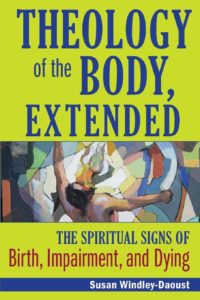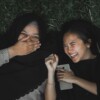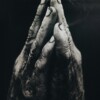
Theology of the Body, Extended: The Spiritual Signs of Birth, Impairment, and Dying
Pope John Paul II delivered a series of “audiences” now known as Theology of the Body over the course of 129 Wednesdays from 1979 to 1984. These presentations focused on our physical (particularly [marital] sexual) nature as God’s gift of love that provides opportunity for us to experience and give love in return. The Pope was addressing the question: What is the meaning of our sexuality? Susan Windley-Daoust, Chair and Associate Professor of Theology at St. Mary’s University of Minnesota, describes the Theology of the Body (hereafter TOB) and “extends” and applies it to three of life’s defining experiences in ways that are striking. Her book is rich theologically and uncomfortably personal in that she raises questions we seldom hear (What does childbirth mean? and so forth) and fills the vacuum so often experienced in the church around life experiences which we would prefer not to discuss. She takes the TOB’s central affirmation that the physical embodiment and relational possibilities of creation are signs of union with God and vehicles for experiencing love in marriage.
Chapter 1 introduces TOB by way of John Paul II’s use of a philosophical/spiritual approach intended for a contemporary audience seen to be more open to a subjective-affective approach than to traditional Augustinian/Platonic or Thomistic/Aristotelian formulations of faith’s “unpacking” of sexuality. Windley-Daoust describes John Paul II’s effort to argue in contemporary terms that the body means something theologically and spiritually and employs a theological anthropology based on a phenomenological orientation offering the immediacy of a subjective/experiential framing of the faith. (John Paul II successfully completed his Doctorate in Sacred Theology in 1954 with a dissertation on the possibility of founding a Christian ethic on the phenomenological ethics of philosopher Max Scheler.) Phenomenology invites a direct “gut” (pre-intellectual) response to experience—a spiritual response facilitated by the Pope’s use of Carmelite resources, another influence from his own early formation. There, the importance of visualization in prayer (per Ignatius’ Spiritual Exercises) and a pre-reflective emphasis on seeing invites one to adopt an attitude of receptivity or self-disposition (disponibilité)—an openness to the “hermeneutic of the gift” of sexuality. The author summarizes those influences on John Paul II: “the phenomenological attitude … a posture of openness to God … human value discovered and discerned in the light of God through love … detachment from created things in order to receive them as gifts, … connect, and frame the papal audiences” (24).
The purpose of TOB is to show God’s plan for married love. Windley-Daoust’s goal is to focus on the ensouled body “as a pre-given language” (33)—created, fallen, but redeemed—as a sign of the radical, healing love of God, seen and experienced through the “other primal human experiences” (33) of childbirth, impairment, and death. In structuring the main body of the book, she follows John Paul II’s original format: first, an analysis of the cultural setting of a topic; then scriptural and theological resources that can inform a Christian understanding of it; finally, an “attempt to ‘re-read’ the experience as intended by God, with the help of phenomenological attitude and contemplative Carmelite insights” (34).
Childbirth is the obvious topic to address first after the sex-in-marriage introduction TOB offers and chapter 2 is “The Gift of the Birthing Body: The Vocation to Motherhood.” The chapter begins with a brief history of modern childbirth: a century or more of stumbles and fumbles as “medicine” put birthing women into hospitals, ironically facilitating the spread of childbed fever, and transforming childbirth into a medical “problem” that now calls for a full array of procedures, medicines, and machines—until recently hidden from fathers, friends, and family. Then came the reaction based on the physiological and psychological realities of childbirth as natural (that is, not a problem). Windley-Daoust walks the reader through the Bradley Husband-Coached Childbirth Method in order to base her theological “take” on childbirth on the physiological realities of the created birthing event. (Windley-Daoust, mother of five, knows whereof she writes, having used the method herself.) The fear and pain of childbirth are central to her treatment, but culture and sin are the real culprits. She acknowledges that pain must be addressed if medically indicated, but that under most/normal conditions it “comes with the territory.” Pain is clearly problematic, but is theologically explained as a function of fear (that is, sin), and should be seen as an occasion to choose whether or not to be open to God in the vocation of motherhood. This is “a privileged ground for giving and receiving grace” (68), and one is called to be present in that particular moment—to be disposed in an attitude of availability and to yield the “hospitality of the womb” (77).
The deaths of one-third of a million women worldwide annually in childbirth offers an unsettling transition to chapter 3, “The Gift of the Impaired Body: the Vocation to Brotherhood and Sisterhood.” “Impairment refers to a loss of physiological form or function, … the consequence [of which is] disability, … [and] handicap refers to the societal disadvantage resulting” (109). Impairment is an experience of bodily limitation, in form or function, due to genetic, psychological, or physical disorders. The importance played by norms, eugenics, and the dispositive role of genetic testing in our decision-making in our “cult of normalcy” draws her fire as statistics provided the tools to differentiate the “normal” from the impaired. The critical issue is whether and how each person is in relationship with others; some 40 pages are devoted to examples of fulfilling relationships within the L’Arche communities. It is in community that the “hermeneutic of the gift” is embodied in “‘ecstatic identity’: the received but non-possessed identity of Jesus Christ” (140). This identity is a gift we receive, and we ought to return it constantly as gift. It is neither invented by us nor chosen off a shelf of our consumer culture. “We are called to kenotic identities: to define ourselves by receiving our identity from God” (150). The chapter concludes with “case studies” illustrating each of three kinds of impairment: genetic (Down syndrome); physical (hearing loss); and personality (depression and dementia).
Appropriately, the final chapter is “The Gift of the Dying Body: The Vocation to Elderhood.” It opens with a brief cultural history of the ways dying has been confronted. Once-upon-a-time has it that dying was universally expected and accepted, and experienced in solidarity with community/church/family. The church played a constant, transparent, and supportive role (see the ars moriendi). In contrast, the modern experience is undergirded by a scientific/medical structure able to extend (and often isolate and degrade) life, with doctors aggressive to “save” rather than “care,” and the line between alive and dead subjected to legal and scientific debate. Meanwhile, a culture of youth seeks to avoid death (not just dying, but even speaking of dying); Arthur McGill’s observation that Americans “worship Death as Lord” gets it right. Even ministers prefer bereavement and crisis work to that of helping the dying die well.
If we miss this critical point that the “dying process is a natural sign pointing to union with God” (209) and we “outsource” dying, we fail to help achieve what “good death” is possible. Instead, dying is an occasion in which we might be sanctified by a willingness to be at God’s disposal. Rather than limit the focus of “good death” to the one dying, Windley-Daoust expands the definition: “To die well means to offer growth for the enrichment of the body of Christ” (222). Dying is that final competition between God and everything else that could detour the dying from that goal. “The dying process is a[nother] privileged space where God can shape one’s healing” (228). We are all called to die, and dying makes one an “elder”—a vocation to which we may be called at any age and be given the gift of teaching others the faith and showing the way.
In an era of drugs that promise everything, we are in danger of believing that we do not have time to let pain keep us from doing our own thing; and, yes, we will fight against “the dying of the light.” Thus Windley-Daoust’s call to ask what it means to be an embodied soul that has specific painful experiences (from short-term pain of childbirth to long-term impairment to final obliteration) is a healthy “stop the world” read. We must admit that the church pays little attention to the “facts of life” she has chosen to examine through the lens of TOB. (Example: “I rarely hear prayers for the mentally ill on any parish’s intercession list” [159]).
We need what this book offers. Studies in religion, philosophy, sociology, politics, and spirituality will be enriched by the inclusion of relevant portions of it. Expectant couples, support groups for the impaired, and hospice caretakers will glean support and perhaps even extend the application of TOB to other experiences of the embodied soul still needing attention. As general reading for spiritual formation, this volume belongs in every church library. The notes range from the technical and academic to the personal and anecdotal, offering something useful for any reader wanting to pursue piqued interest, but the lack of a bibliography is puzzling.
I particularly appreciated the framing of dying in terms of a communal living-out of the vocation to elderhood. The author recognizes that the work of dying starts early in life; she quotes Arthur C. McGill: “Every day the enamel wears a bit thinner” (197). So there is a lot of work to be done and readers may be encouraged to embrace other resources not explicitly referenced here to enrich their call to receive the gift of dying: our baptism, the prayers and procedures from the traditional ars moriendi, Karl Rahner’s Theology of Dying, volumes by Protestants Allen Verhey and Fred Craddock, et al, and the examples of those saints who wrote of dying (Paul, Ignatius, Julian of Norwich, Thomas á Kempis, Dietrich Bonhoeffer, Flannery O’Connor, and even Miguel de Unamuno). A sincere “thank you” to Susan Windley-Daoust, who rightly reminds us that we are all called to discover the hermeneutic of the gift—of dying and of receiving God.























